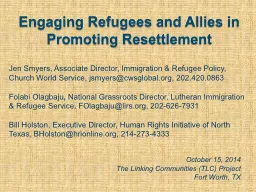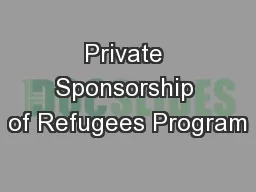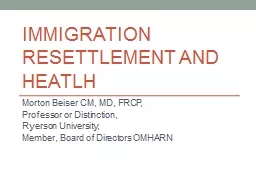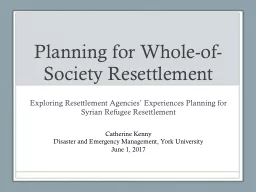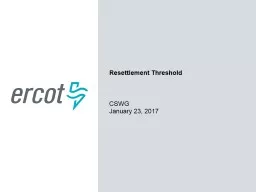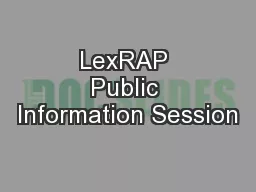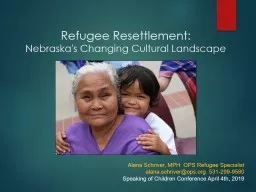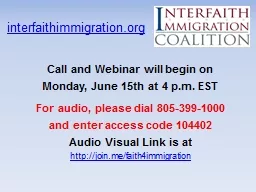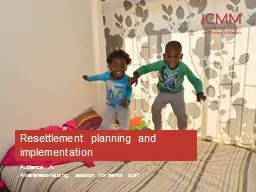PPT-Engaging Refugees and Allies in Promoting Resettlement
Author : conchita-marotz | Published Date : 2016-07-03
October 15 2014 The Linking Communities TLC Project Fort Worth TX Jen Smyers Associate Director Immigration amp Refugee Policy Church World Service jsmyerscwsglobalorg
Presentation Embed Code
Download Presentation
Download Presentation The PPT/PDF document "Engaging Refugees and Allies in Promotin..." is the property of its rightful owner. Permission is granted to download and print the materials on this website for personal, non-commercial use only, and to display it on your personal computer provided you do not modify the materials and that you retain all copyright notices contained in the materials. By downloading content from our website, you accept the terms of this agreement.
Engaging Refugees and Allies in Promoting Resettlement: Transcript
Download Rules Of Document
"Engaging Refugees and Allies in Promoting Resettlement"The content belongs to its owner. You may download and print it for personal use, without modification, and keep all copyright notices. By downloading, you agree to these terms.
Related Documents

